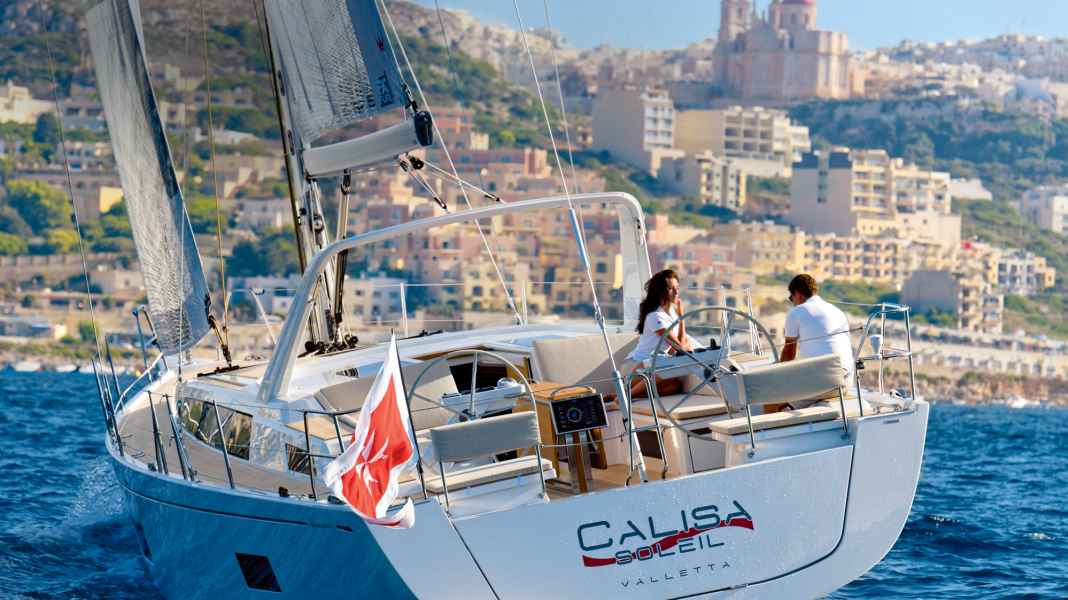
As with almost all consumer goods, the tax office also collects tax on the purchase of a new yacht. The same applies to the purchase of a second-hand boat, as long as the seller is not a private individual. 19 per cent of the purchase price must currently be paid in Germany. For our neighbours in Austria it is 20 percent, in the Netherlands 21 percent and in Denmark even 25 percent - the value added tax or VAT rates - the terms are usually used synonymously - vary from country to country. And there are often one or more reduced rates for certain goods, sometimes even for ships.
As a rule, however, the levy to the tax authorities has a considerable impact, especially on very high-value yachts. For example, for a boat that is offered for a gross price of 100,000 euros, the VAT in Germany amounts to 19,000 euros. If the price is 500,000 euros, the tax burden rises to 95,000 euros. And anyone who buys a one-million-euro yacht has to pay a whopping 190,000 euros to the state. No wonder that some buyers are looking for ways to avoid paying VAT or at least reduce it considerably. But is this even possible legally?
Some of you will have heard something about the Malta flag, French leasing or the 18-month rule. Or, more recently, about the Croatia model. But what is behind all this? What are the advantages and disadvantages? And for whom is this an option?
What all the tax-saving models mentioned have in common is that they are legal. However, if you want to use them, you should definitely be familiar with tax law issues or seek advice from the relevant experts.
Model 1: Handover and use of the yacht outside the EU
This is particularly interesting for long-distance sailors who do not want to sail their new boat within EU waters. They have the dealer deliver it directly to a third country such as Montenegro, Albania, Gibraltar or Norway. As the place of performance, i.e. the place where the ship is handed over from the dealer to the customer, is already outside the EU, VAT is simply not incurred. It only has to be paid on return to the EU, for example after several years of sailing around the world. But then only on the current value of the yacht, which is usually lower than the new price.
Notwithstanding this, the ship can sail under the German flag the entire time. It can also sail to French overseas territories, for example in the Caribbean. Although these are politically part of the EU, they do not fall within the scope of the EU VAT Directive.
Model 2: Temporary use of the yacht by non-EU citizens
For example, Swiss, Norwegian or US citizens who are not resident in an EU country for tax purposes can sail their yacht in EU waters for a limited period of time without having to pay VAT. However, the following then applies: The owner, as a non-EU citizen, may take EU citizens on board as guests. However, they must also be on board themselves.
And: use in EU waters is limited to 18 months. After that, the yacht must leave the EU at least once. Under certain circumstances, the period may be longer if the owner can prove that he has not used the vessel continuously. It is also subject to customs supervision during temporary use and may not be sold or chartered out.
Model 3: Leasing with reduced VAT rates
Many people have heard of so-called Malta or French leasing. In the yacht sector, both are among the best-known tax-saving models. The way it works: The new yacht is purchased from a leasing company based in Malta or France, for example. The customer leases the yacht from this company in the form of a hire purchase model. The leasing company remains the sole owner of the vessel. During the leasing period, VAT only has to be paid on the leasing instalments on a pro rata basis, depending on how often the ship is used within EU waters. If the ship is often sailing in Turkish waters or even on the Atlantic, for example, the effective tax burden can fall to between five and twelve per cent.
At the end of the leasing period, the ship can be purchased by the customer by paying a final instalment. This final instalment is also only subject to pro rata VAT, again depending on how often the ship has been used within EU waters over the entire leasing period.
Read also:
However, the EU severely restricted these models in 2019, especially Malta leasing. For a long time, the proportion of non-European use of a leased ship could simply be estimated. The rule was: the larger the yacht, the lower the intra-European use, the lower the tax to be paid on the leasing instalments. Other EU states no longer recognise this approach.
Malta has therefore harmonised with the French leasing model. There, the actual stay of the ship outside EU waters must be proven. For example, by means of AIS tracks or notarised logbook entries. Depending on this proof, the VAT on the leasing instalments and final payment is then reduced.
Given the administrative burden, these models are no longer likely to be particularly attractive to the average boat owner.
Model 4: Establishment of a charter company in Croatia
Probably the best model for Adriatic fans at the moment, but still unknown to most: the buyer of a yacht has it delivered to Croatia by the dealer and establishes a yacht charter company, a d.o.o., which acquires the vessel. This legal form essentially corresponds to the German GmbH; however, the capital contribution is only around 2,500 euros instead of 25,000. Croatia recognises the commercial use of the yacht from an annual charter turnover of seven percent of the net purchase price of the ship.
This also applies if you charter the ship yourself as the owner of the d.o.o. and then also pay the charter fee. Croatian VAT must be paid on this. However, this rate is reduced to 13 per cent. And expenses such as maintenance, repair, insurance or mooring costs can be deducted. Specialised local agencies offer their services for comparatively low fees for dealing with the Croatian tax authorities. VAT for the ship is only payable when the Croatian company sells the ship on, but then only on the current value.
The only drawback is that the owner cannot claim losses for tax purposes in Germany.
The author: Benyamin Tanis

From boat purchases to tax and customs matters to the settlement of claims: The sailor and lawyer from Kiel has been advising and representing his clients for many years with a team of several lawyers, boat and ship builders and a Europe-wide network of partner law firms in all legal matters relating to yachting.

